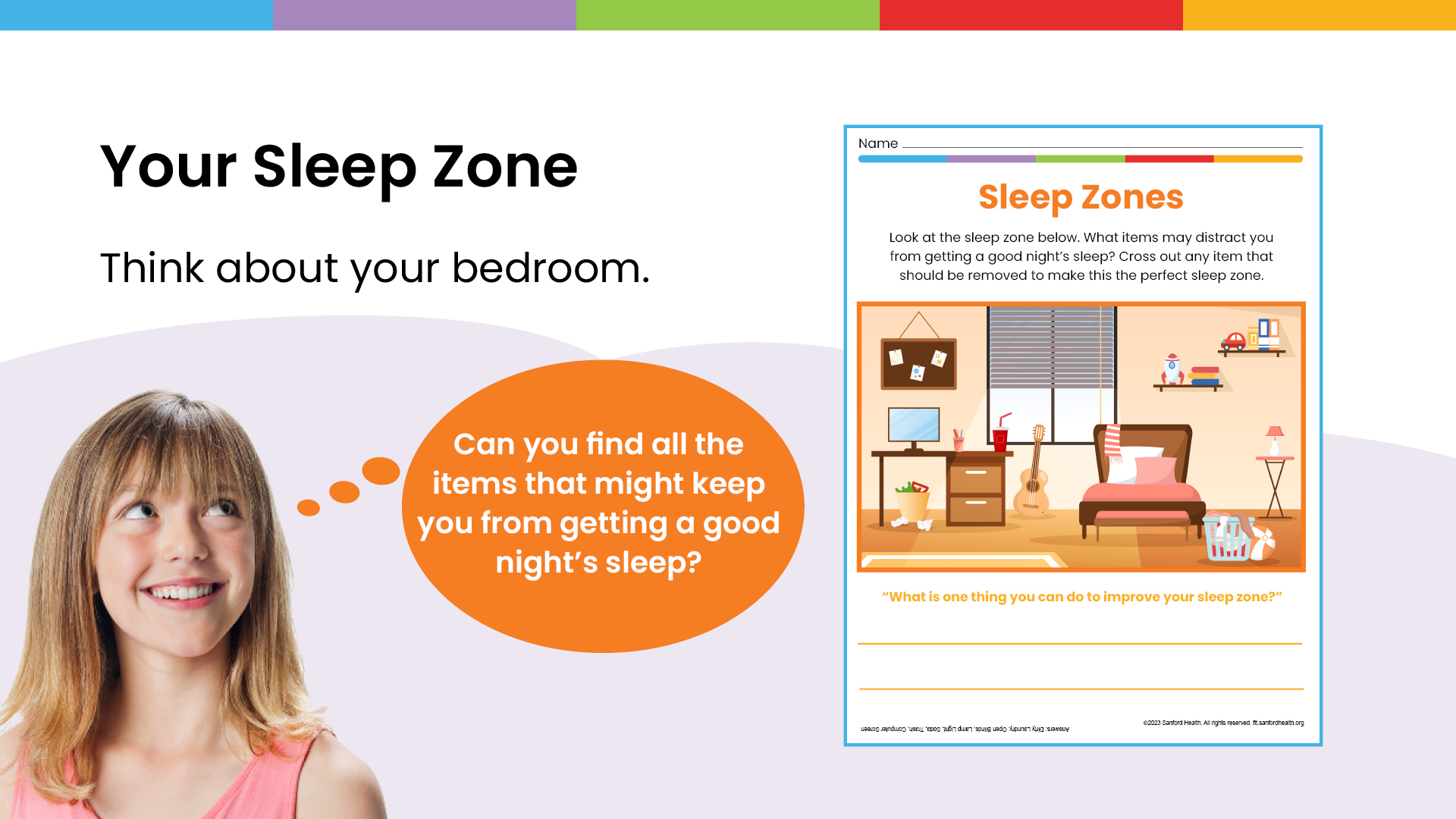Objectives
- Describe a "sleep zone" as an environment to get your best sleep.
Info to Know
Recharge is your energy. It influences the choices you make. fit presents different ways to recharge and get energy:
- Relax, without a screen, throughout the day.
- Get enough sleep. Below are the minimum and maximum hours of sleep for different age groups as recommended by the American Academy of Pediatrics:
- Ages 4-12 months: 12-16 hours (including naps)
- Ages 1-2 years: 11-14 hours (including naps)
- Ages 3-5 years: 10-13 hours (including naps)
- Age 6-12 years: 9-12 hours
- Age 13-18 years: 8-10 hours
This unit introduces students to the importance of getting enough sleep. They will learn about how to establish or improve their bedtime routines and how to create their own sleep zone—an environment conducive to sleep.
Set The Stage
As a large group, have kids list important features of a bedroom.
To use this with your students click here.
Captivate
Best Elements for a Sleep Zone
Ask students to close their eyes and create a mental picture of a bedroom before you begin the slideshow.
Educate
Examine Your Sleep Space
A child's room can promote good sleep. Dim lighting, soft blankets, comfortable pillows, shades to block sunlight, quiet music, and uncluttered surfaces help to create a sleep zone for better sleep. Television, computer screens, and bright light can interfere with sleep.
Ask students to think about why bright lights, phones, televisions, and computers are distractions that can keep them from falling asleep.
Check for understanding: What is one thing you can do to help yourself sleep better?
Activate
Improve Your Sleep Zone
Download the Sleep Zones printable to help students understand what makes an ideal sleep zone. Then have students choose at least one thing they can do to make their sleep spaces a better sleep zone.
Encourage students to ask a family member for help if needed.
Close the Lesson
Today we learned about sleep zones. Next we will revisit what we have learned about how your sleep affects your energy throughout the day.
Grade: 3-5
Time: 20 Minutes
What You'll Need
Resources
Materials
- Slideshow
- Markers
- Poster Board or White Board
Health Education Standards
- Standard 1: Core Concepts–Get an appropriate amount of sleep and rest.
- Standard 2: Analyze Influences
- Standard 4: Interpersonal Communication
- Standard 5: Decision-Making
Social and Emotional Learning Competencies
- Self-Awareness
- Self-Management
- Responsible Decision-Making
Extend the Lesson
- Play the fitGame, Get Your Zs.
- Take the Sleep Zone Quiz to learn how to create a great sleeping space.
- Read about techniques to help yourself relax and fall asleep in the article, Bedtime Relaxation for Kids.
- Read the article, Bedtime Habits for Better Sleep, to learn about the benefits of establishing bedtime routines.





